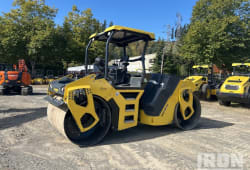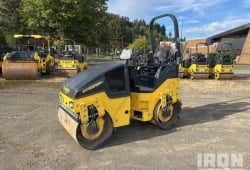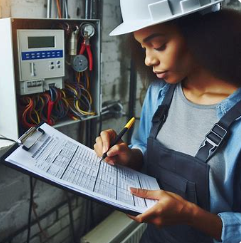Delving Into Modular Design and Construction: Flexible and Efficient Solutions
14 Lectura mínima
)
agosto 13, 2023
Modular design and construction is a versatile and efficient approach that is gaining popularity across various industries. In this article, we will explore the concept of modular design and construction, its key components, and the benefits it offers. We will also delve into the flexibility and efficiency aspects of modular design, discuss successful case studies, highlight future trends, and address the challenges and solutions associated with this innovative construction method.
Understanding Modular Design and Construction
Modular design is a construction technique that involves the assembly of prefabricated components known as modules. These modules are factory-made and transported to the construction site for final assembly. The concept revolves around creating standardized, self-contained units that can be easily integrated into different structures. This results in a faster and more streamlined construction process.
When it comes to modular design, the possibilities are endless. From residential buildings to commercial spaces, modular construction can be applied to various types of projects. For example, in the residential sector, modular design allows for the efficient construction of single-family homes, multi-family complexes, and even high-rise buildings. In the commercial sector, modular construction can be used to create office spaces, retail stores, and educational facilities.
The Concept of Modular Design
At its core, modular design aims to improve construction efficiency by breaking down larger projects into smaller, more manageable units. These units are built in a controlled environment, where quality can be closely monitored. This approach minimizes on-site construction time and allows for simultaneous work on multiple modules.
One of the main advantages of modular design is the ability to achieve a high level of precision and quality control. In a factory setting, skilled workers can focus on specific tasks, ensuring that each module meets the required standards. This level of precision is often difficult to achieve with traditional on-site construction, where various factors such as weather conditions and human error can impact the quality of the final product.
Moreover, modular design offers flexibility in terms of design and customization. While the modules themselves are standardized, they can be easily adapted to meet the specific needs and preferences of the project. This allows for a high degree of customization, ensuring that the final structure aligns with the client's vision.
Key Components of Modular Construction
Modular construction relies on a few key components to ensure a successful project. First and foremost, detailed planning and coordination are essential to determine the module sizes, specifications, and interfaces. Precise measurements and accurate structural calculations are crucial to guaranteeing the modules fit together seamlessly.
In addition to precise planning, efficient logistics, and transportation arrangements are necessary for timely delivery and smooth assembly on site. The modules need to be transported from the factory to the construction site safely and efficiently. This requires careful coordination between the module manufacturer, transportation providers, and the construction team.
Once the modules are on-site, the assembly process begins. Skilled workers carefully position the modules and connect them using various techniques such as welding or bolting. This process requires a high level of precision to ensure that the modules align perfectly and form a structurally sound building.
It's worth noting that modular construction is not limited to just the building's structure. The modules can also include pre-installed mechanical, electrical, and plumbing systems, further reducing on-site construction time. This integration of various systems within the modules ensures a seamless and efficient building process.
Overall, modular design and construction offer numerous advantages, including faster construction timelines, improved quality control, and flexibility in design. As the construction industry continues to evolve, modular design is becoming an increasingly popular choice for many developers and builders.
The Flexibility of Modular Design
One of the significant advantages of modular design is its flexibility. The use of pre-designed modules allows for adaptability and customization to meet specific project requirements. Here are some of the ways modular design offers flexibility in construction:
Modular construction not only offers adaptability and customization but also provides numerous other benefits that make it a preferred choice for architects, designers, and clients alike.
Adaptable Design Options
Modular construction offers a wide range of design options, allowing architects and designers to create unique structures tailored to clients' needs. From residential buildings to commercial spaces, modular construction can accommodate various architectural styles and aesthetic preferences.
Architects have the freedom to experiment with different design elements, such as the shape and size of the modules, the arrangement of windows and doors, and the incorporation of sustainable features. This flexibility in design options ensures that each modular building stands out as a one-of-a-kind masterpiece.
Moreover, modular design allows for the integration of advanced technologies and smart systems, enabling clients to create energy-efficient and technologically advanced spaces. From solar panels to automated lighting systems, modular buildings can be equipped with cutting-edge features that enhance comfort, sustainability, and overall functionality.
Scalability and Expansion Possibilities
Modular design enables easy scalability and future expansion. Additional modules can be integrated seamlessly into an existing structure, minimizing disruption and cost. This flexibility is particularly advantageous for evolving businesses and organizations that require adaptable spaces.
Whether it's a growing company that needs more office space or a school that needs additional classrooms, modular design provides a cost-effective solution. The ability to add modules to an existing structure allows for quick and efficient expansion without the need for extensive construction work.
Furthermore, modular buildings can be designed with future expansion in mind. Architects can plan the initial design to accommodate potential growth, ensuring that the structure can easily adapt to changing needs and demands. This forward-thinking approach saves time and money in the long run and eliminates the need for major renovations or rebuilding.
Additionally, the scalability of modular design extends beyond physical expansion. Modular buildings can be easily reconfigured and reorganized to meet changing functional requirements. Interior walls can be moved or removed, creating open and flexible spaces that can be adapted for different purposes.
Overall, the flexibility offered by modular design allows for endless possibilities in construction. Architects and designers can unleash their creativity, while clients can enjoy spaces that are tailored to their specific needs and can easily adapt to future changes. With its adaptability, scalability, and expansion possibilities, modular design is revolutionizing the construction industry.
Efficiency in Modular Construction
Modular design and construction not only offer flexibility but also significant efficiency benefits. Let's explore some of the key efficiency aspects:
Time-saving Aspects
Modular construction significantly reduces project timelines compared to traditional construction methods. Since modules are built concurrently with on-site preparation, construction time is significantly compressed. This accelerated construction process translates to quicker occupancy and revenue generation for businesses.
One of the time-saving aspects of modular construction is the ability to fabricate modules off-site while site preparation is taking place. This parallel construction approach ensures that the project progresses rapidly, without any delays. While the foundation is being laid and utilities are being installed, modules are being manufactured in a controlled environment, ensuring high-quality construction.
Moreover, the streamlined nature of modular construction allows for efficient coordination and sequencing of tasks. With traditional construction methods, various trades often have to work linearly, waiting for the previous trade to finish before commencing their work. In modular construction, different modules can be fabricated simultaneously, allowing for multiple trades to work concurrently. This parallelism reduces idle time and eliminates the need for sequential construction, resulting in significant time savings.
Cost-effectiveness of Modular Construction
Modular construction is often more cost effective than traditional construction methods. The controlled environment of the factory minimizes material waste, and the shorter construction timeline reduces labor costs. Additionally, the ability to prefabricate modules allows for better cost control and efficient resource allocation.
One of the cost-saving aspects of modular construction is the reduction in material waste. In a factory setting, materials can be precisely measured and cut, minimizing any excess waste. This level of precision is often difficult to achieve on a traditional construction site, where materials are cut on-site, leading to potential errors and wastage. By minimizing material waste, modular construction helps reduce costs and contributes to a more sustainable construction process.
Furthermore, the shorter construction timeline of modular construction translates into lower labor costs. With traditional construction methods, projects can be delayed due to weather conditions, unforeseen site issues, or other factors. These delays can lead to increased labor costs, as workers may need to be on-site for a longer duration. In contrast, modular construction allows for better project planning and scheduling, minimizing the chances of delays and ensuring that labor costs are kept under control.
Additionally, the ability to prefabricate modules in a controlled factory environment offers better cost control and efficient resource allocation. Factory production allows for better predictability in terms of material costs, labor requirements, and overall project expenses. This predictability enables more accurate budgeting and cost estimation, reducing the chances of cost overruns and ensuring that projects stay within budget.
In conclusion, modular construction offers significant efficiency benefits in terms of time-saving aspects and cost-effectiveness. The parallel construction approach and streamlined coordination of tasks result in shorter project timelines, allowing for quicker occupancy and revenue generation. Moreover, the controlled factory environment minimizes material waste and reduces labor costs, contributing to a more cost-effective construction process. With its numerous efficiency advantages, modular construction continues to gain popularity in the construction industry.
Case Studies of Successful Modular Design and Construction
Modular design and construction have revolutionized the building industry, offering numerous advantages across various sectors. Let's delve into two remarkable case studies that highlight the success and potential of modular design:
Residential Modular Buildings
In recent years, modular design has gained significant traction in the residential sector. This innovative approach to home construction offers unparalleled efficiency and cost-effectiveness. One noteworthy case study is the XYZ Company's successful completion of a modular housing project.
The XYZ Company embarked on a mission to provide high-quality, energy-efficient homes to meet the increasing demand for affordable housing. Through modular design, they were able to deliver exceptional results in a fraction of the time compared to traditional building methods.
Utilizing cutting-edge technology and advanced manufacturing processes, the XYZ Company customized each module to meet individual preferences, ensuring that every homeowner's vision became a reality. The modular components were constructed off-site in a controlled environment, guaranteeing precision and minimizing wastage.
Once the modules were ready, they were transported to the construction site, where they were seamlessly assembled. This streamlined process allowed for accelerated construction, significantly reducing the time it took to complete the project. Homeowners were able to move into their new, energy-efficient homes in record time.
Moreover, the XYZ Company's modular housing project showcased the versatility of this construction method. From single-family homes to multi-unit complexes, the modular design proved to be adaptable and scalable, meeting the diverse needs of homeowners.
Commercial Modular Structures
The modular design has also proven its worth in the realm of commercial construction projects. The ABC Corporation's endeavor to build a large office complex provides a compelling case study on the efficiency and effectiveness of modular construction techniques.
The ABC Corporation sought to construct a state-of-the-art office complex that would serve as a hub for its operations. With strict deadlines and a desire to minimize disruption to nearby businesses, they turned to modular design as the solution.
By employing modular construction techniques, the ABC Corporation was able to prefabricate the office modules off-site while simultaneously preparing the construction site. This parallel approach allowed for significant time savings, as construction activities could progress simultaneously.
Once the modules were completed, they were transported to the site and efficiently assembled, resulting in a seamless and rapid construction process. The modular design ensured that each office space was tailored to the company's requirements, promoting productivity and employee satisfaction.
Furthermore, the ABC Corporation's commitment to sustainability was exemplified through its choice of modular design. By utilizing environmentally friendly materials and incorporating energy-efficient features, the office complex achieved a high level of sustainability, exceeding the client's expectations.
The success of ABC Corporation's modular construction project not only showcased the speed and efficiency of this method but also demonstrated the aesthetic appeal and functionality that can be achieved through modular design.
In conclusion, these case studies of successful modular design and construction in both the residential and commercial sectors illustrate the transformative potential of this innovative building method. With its efficiency, cost-effectiveness, and ability to deliver high-quality results, modular design continues to shape the future of construction.
Future Trends in Modular Design and Construction
The future of modular design and construction looks promising, with ongoing advancements in technology and a growing emphasis on sustainability. Here are some trends to watch:
Technological Advancements
Technological advancements, such as Building Information Modeling (BIM) and 3D printing, are revolutionizing the modular construction industry. BIM allows for improved visualization and collaboration, ensuring efficient coordination between designers, contractors, and manufacturers. This technology enables architects and engineers to create detailed virtual models of modular structures, enabling them to identify and resolve potential issues before construction begins. Moreover, BIM facilitates the integration of various building systems, such as electrical, plumbing, and HVAC, ensuring seamless functionality and optimal performance.
On the other hand, 3D printing of modules offers endless possibilities for customization and faster production. This innovative technique allows for the creation of complex and intricate designs that were once challenging to achieve with traditional construction methods. With 3D printing, architects and designers can push the boundaries of creativity, resulting in unique and visually stunning modular structures. Furthermore, the speed of 3D printing significantly reduces construction time, enabling projects to be completed more efficiently.
Sustainability and Green Building Practices
As the world embraces sustainable practices, modular design and construction align perfectly with green building principles. With better control over materials and waste reduction, modular construction minimizes the environmental impact. The controlled factory environment in which modular components are manufactured allows for precise material usage, reducing waste and optimizing resource efficiency. Additionally, the ability to integrate renewable energy sources, such as solar panels and wind turbines, into modular structures further enhances their sustainability.
Moreover, modular construction promotes energy-efficient systems, such as smart lighting and HVAC controls, which can be seamlessly integrated into the design. These systems optimize energy consumption by adjusting lighting levels and temperature based on occupancy and natural lighting conditions. Furthermore, modular buildings can be designed to maximize natural ventilation and daylighting, reducing the need for artificial lighting and mechanical cooling. The combination of these sustainable features results in reduced energy consumption and lower operating costs for modular structures.
Furthermore, modular construction allows for the easy implementation of water-saving technologies. Water-efficient fixtures, such as low-flow faucets and dual-flush toilets, can be incorporated into the design, reducing water consumption. Additionally, rainwater harvesting systems can be integrated into modular structures, collecting and storing rainwater for non-potable uses, such as irrigation and toilet flushing.
In conclusion, the future of modular design and construction is bright, driven by technological advancements and a strong commitment to sustainability. With the ability to leverage cutting-edge technologies like BIM and 3D printing, modular construction offers endless possibilities for creativity and efficiency. Furthermore, the inherent sustainability of modular design, combined with the integration of green building practices, ensures that modular structures are not only visually appealing but also environmentally friendly and energy-efficient.
Challenges and Solutions in Modular Design and Construction
While modular design and construction offer numerous benefits, it is not without its challenges. It is important to acknowledge and address these obstacles to ensure successful projects. Here are some common challenges and innovative solutions:
Common Obstacles in Modular Construction
One challenge is transportation and logistics. Moving large modules from the factory to the construction site requires careful planning and coordination. Additionally, site accessibility and site-specific restrictions can pose challenges during module assembly. Design complexity and ensuring compatibility between modules are also potential hurdles.
Innovative Solutions and Best Practices
To overcome these challenges, effective project management, open communication, and collaboration among all stakeholders are essential. Thorough site assessments, including access routes, can identify potential obstacles before project commencement. Adopting modular design principles during the initial stages of the project ensures seamless integration and maximizes efficiency.
In conclusion, modular design and construction provide flexible and efficient solutions for various construction projects. With their adaptability, time-saving aspects, and cost-effectiveness, modular buildings have proven their worth in both residential and commercial sectors. Exciting future trends, such as technological advancements and sustainable practices, promise further improvements in the modular construction industry. By addressing challenges and embracing innovative solutions, the industry is poised for continued growth and success.














